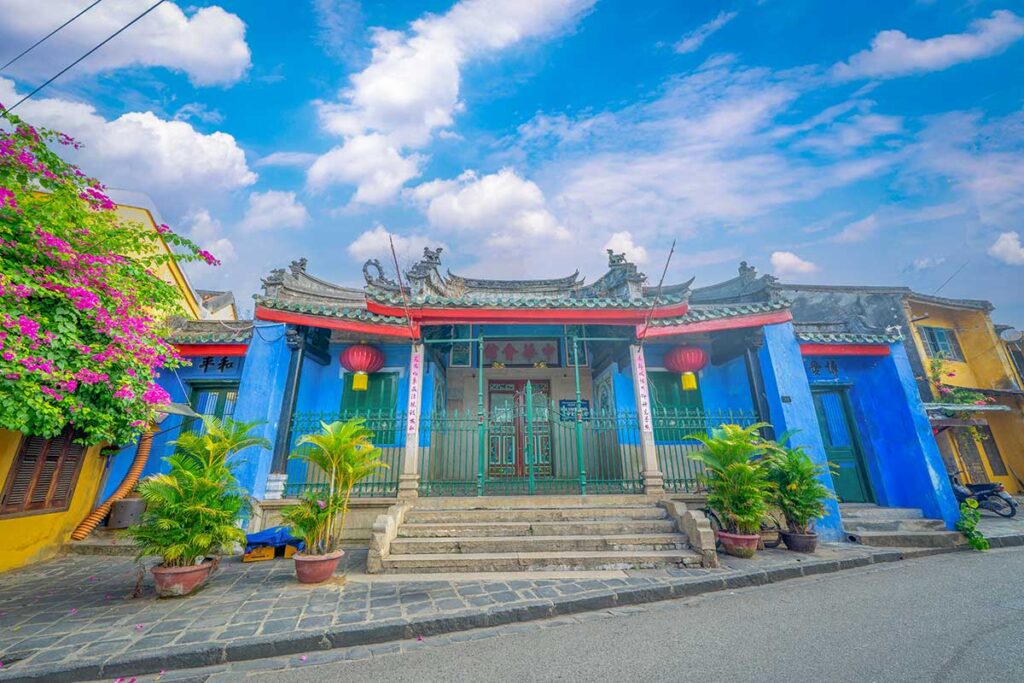What is the Trung Hoa Assembly Hall?
The Trung Hoa Assembly Hall, also known as Ngu Bang Hall, Duong Thuong Hall, or the Five Congregations Hall, is a unique site in Hoi An because it brought together all five major Chinese communities—Fujian, Cantonese, Hainanese, Teochew, and Hakka—under one roof. It served not only as a temple but also as a communal space for business, education, and social support.
Today, it continues to host worship ceremonies and cultural activities. The hall is primarily dedicated to Thien Hau (Mazu), the sea goddess, but also features altars to Confucius, Quan Cong, and others. Unlike the Fujian or Cantonese assembly halls, which represent a single community, this hall symbolized unity across regional lines.
Hoi An Walking Tour by Local Guide
- Experience Explore Hoi An’s Ancient Town with an expert local guide and insider stories.
- Includes Market visit, traditional house, colorful temples, and coffee break by electric car.
History of Trung Hoa Assembly Hall
The Trung Hoa Assembly Hall dates back to before 1741, originally known as the Duong Thuong Assembly Hall. It served as both a spiritual site and a communal meeting place for Hoi An’s five major Chinese communities—Fujianese, Cantonese, Teochew, Hainanese, and Hakka—who used it to worship, support one another, and conduct business. In 1928, it was renamed the Trung Hoa Assembly Hall and repurposed as a Chinese public school and cultural education center.
During wartime, the building was used as a local workshop before being returned to the Chinese community in 1991. Today, it continues to function as both a temple and a Chinese culture center, offering language classes and hosting traditional ceremonies. It was recognized as a national monument in 1990 and is an integral part of Hoi An’s UNESCO World Heritage Site.
Highlights & Architecture
The Trung Hoa Assembly Hall stands out for its large footprint, educational layout, and striking blue facade—unlike the more vibrant red tones seen at Hoi An’s other Chinese halls. Beyond its religious role, this hall served as a cultural center, which is still reflected in its layout and details.
1. Tam Quan Gate & Entrance
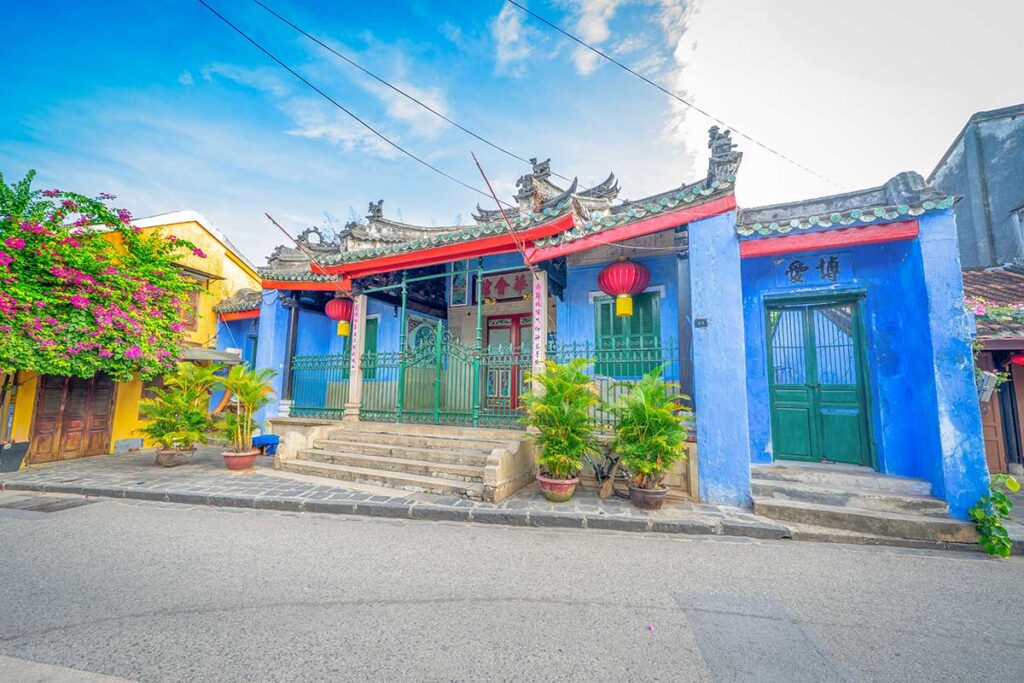
You enter through a raised three-arch gate with stone steps and an inscription above that reads “Assembly Hall of the Chinese Congregations.” Its blue-painted facade sets it apart from the red and gold seen at places like Phuc Kien or Quang Dong.
2. Front Courtyard
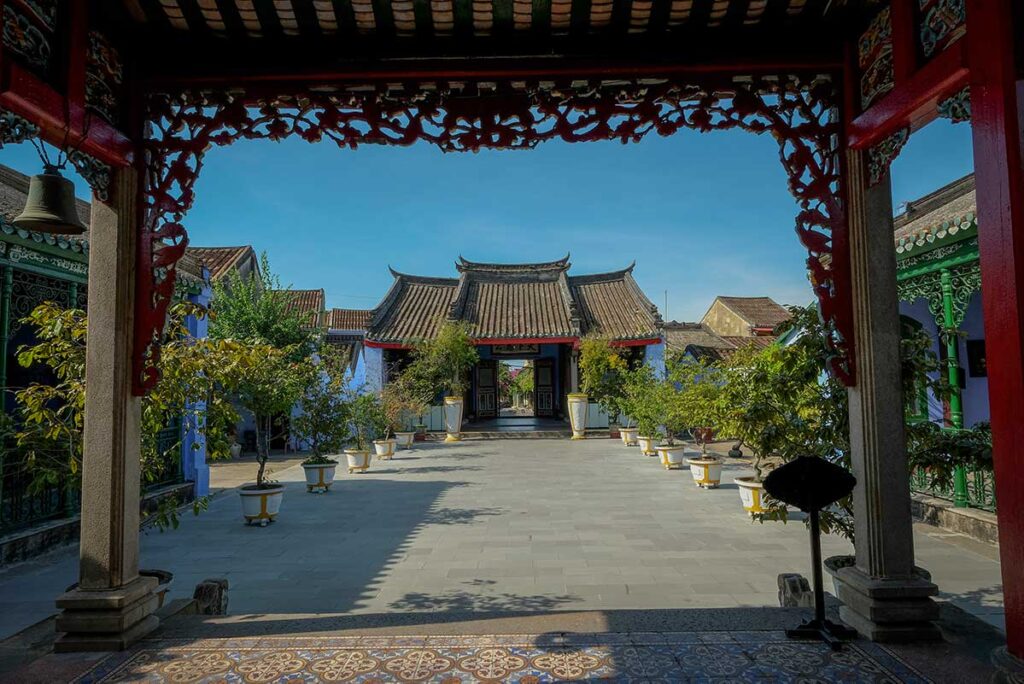
This open area features bonsai trees, potted flowers, and shade trees, offering a calm transition between the street and the inner hall. It’s a peaceful introduction to the space, ideal for a short break before entering the temple area.
3. Main Worship Hall
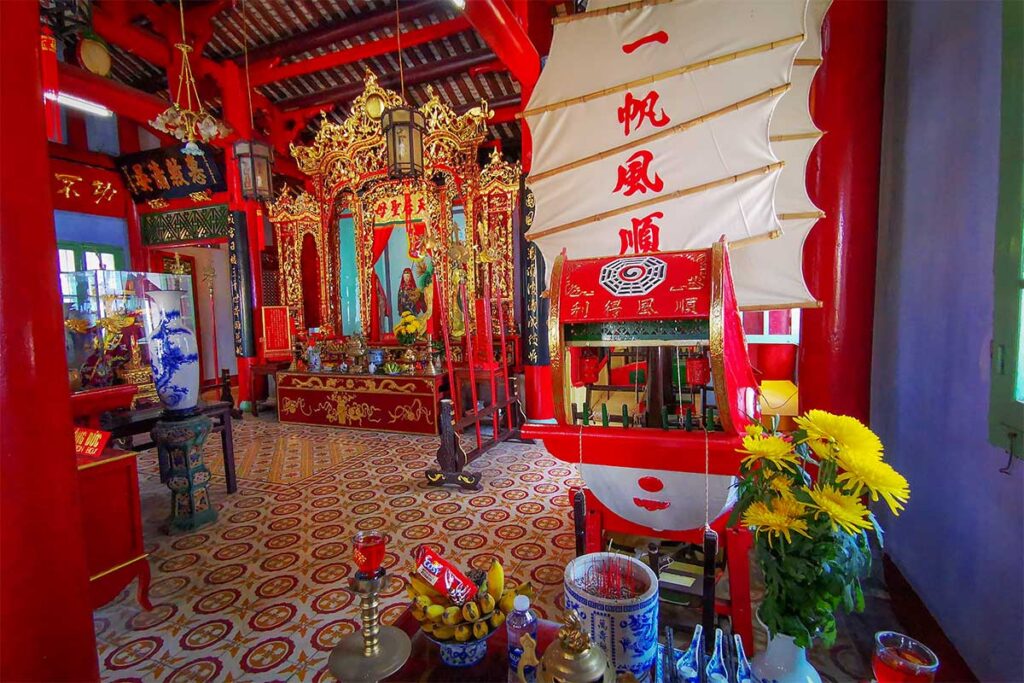
The central shrine is dedicated to Thien Hau (Mazu), flanked by Quan Cong and the God of Wealth. Inside, you’ll also see incense coils, ceremonial items, wooden ancestor tablets, and symbolic guardian deities like Thien Ly Nhan (All-Seeing) and Thuan Phong Nhi (All-Hearing).
4. Side Halls (East & West)
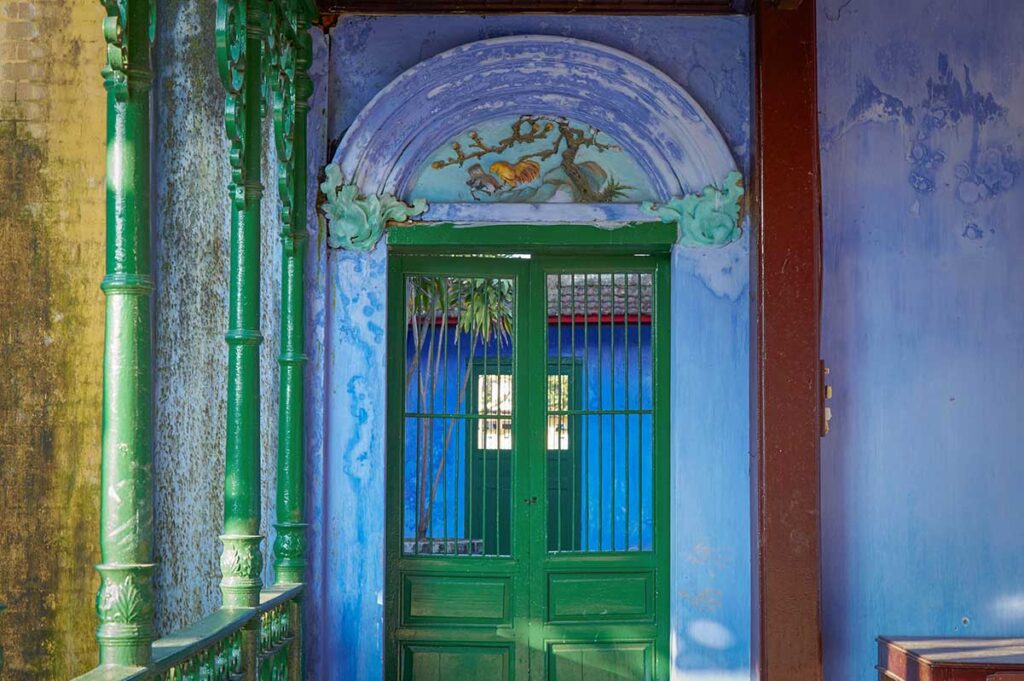
Traditionally used for gatherings, education, and cultural classes, these rooms once hosted lessons in Chinese language and etiquette for local Chinese youth. The halls still maintain a community feel, with old seating and educational decor.
5. Rear Courtyard & School Area
At the back, you’ll find a wide yard with a basketball court and school-style buildings.
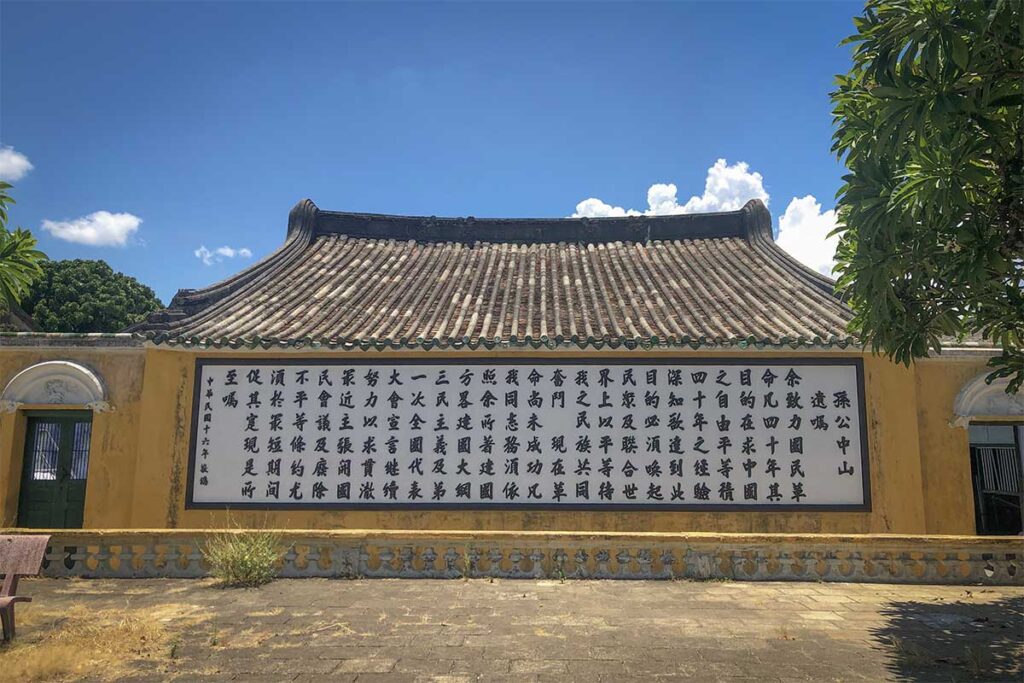
Notable elements include a plaque with Sun Yat-sen’s will, honoring his influence, and a memorial to local resistance fighters who operated from this site during wartime.
6. Decorative Elements

The architecture includes detailed wooden carvings, dragons, waves, and phoenixes, referencing both maritime heritage and Confucian symbolism. The roof tiles, wall reliefs, and artistic motifs reflect centuries of Chinese craft and belief, especially linked to trade and protection.
Location & visiting information
Opening Hours
Open daily from 7:00 AM to 6:00 PM.
Entrance Fee
Free to enter — unlike the other Chinese assembly halls in Hoi An, Trung Hoa Assembly Hall is not part of the Ancient Town ticket system, so you can visit without using one of your limited ticket slots.
Where is it?
Located at 64 Tran Phu Street, right next to the Fujian (Phuc Kien) Assembly Hall. It’s one of the easiest halls to add to your walking route.
How to get there
The hall sits along Tran Phu Street, the main walking route through Hoi An Ancient Town. It’s easily walkable from anywhere in the Old Town and makes a convenient stop between major sites like the Japanese Bridge and the Central Market.
Is it worth visiting?
Yes — especially if you’re interested in the multicultural history of Hoi An. The Trung Hoa Assembly Hall (Ngu Bang) is the only one that represents all five Chinese communities and offers a unique glimpse into their shared heritage.
That said, it’s less visually impressive than Fujian or Cantonese halls. The design is more functional than ornate, and it feels more like a cultural center than a grand temple.
Still, it’s free to enter, often quiet, and not overrun by tourists — making it a refreshing stop if you’ve already seen the more popular halls. It’s informative, peaceful, and atmospheric, especially for travelers who enjoy cultural details over dramatic architecture.
Other Assembly Halls in Hoi An
If you’re exploring Hoi An’s Chinese heritage, here are four other assembly halls worth visiting — each with its own story and architectural charm:
- Phuc Kien Assembly Hall (Fujian) – The largest and most ornate of all, known for its impressive gate and richly decorated Mazu shrine.
- Cantonese Assembly Hall (Quang Dong) – Famous for its colorful dragon fountain, bold woodwork, and altars to Guan Yu.
- Hai Nam Assembly Hall – Built to honor 108 Hainanese merchants wrongfully executed; combines religious worship with historical remembrance.
- Trieu Chau Assembly Hall (Teochew) – A smaller, more tranquil hall with delicate carvings, wave motifs, and peaceful garden space.
